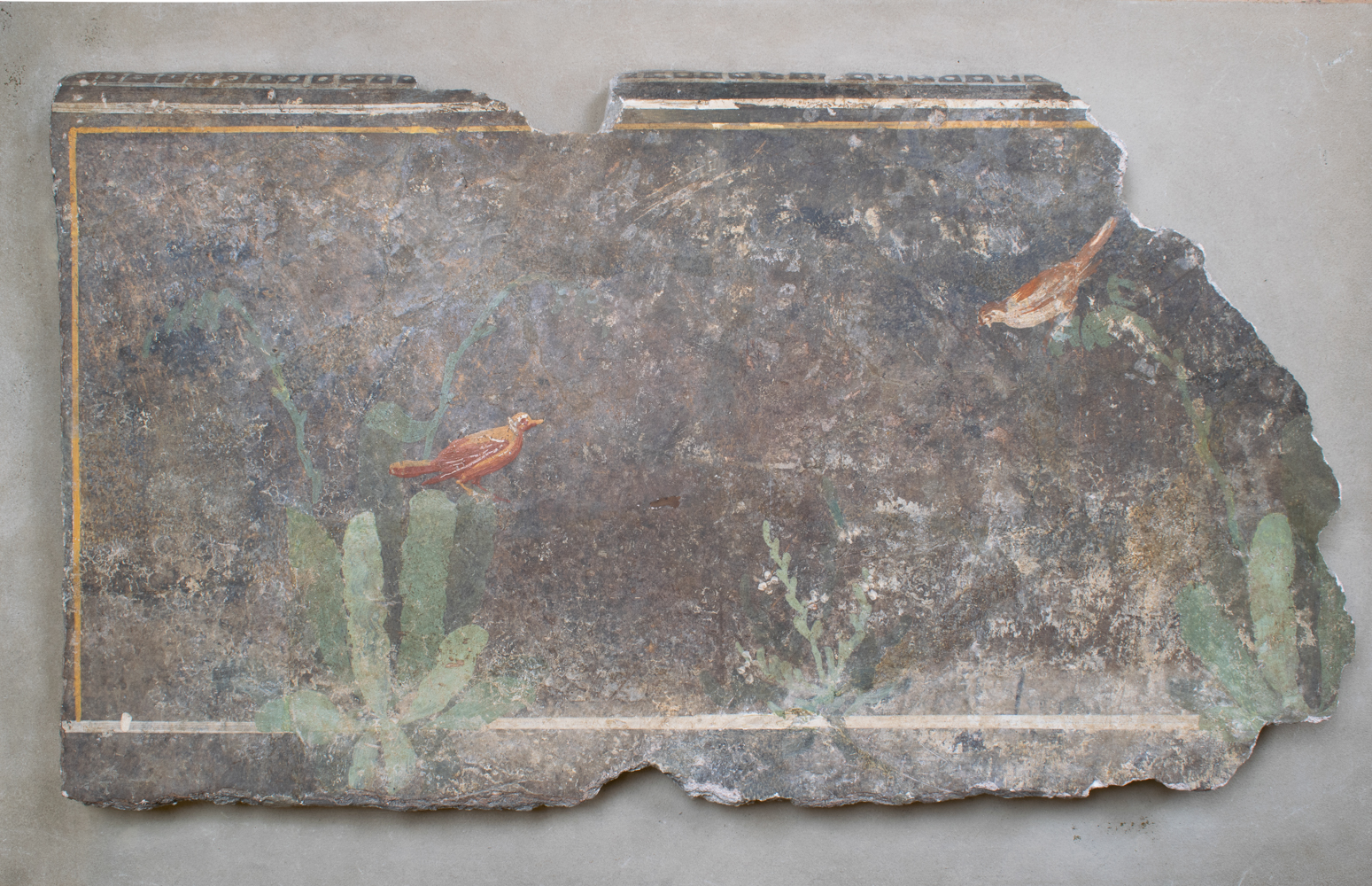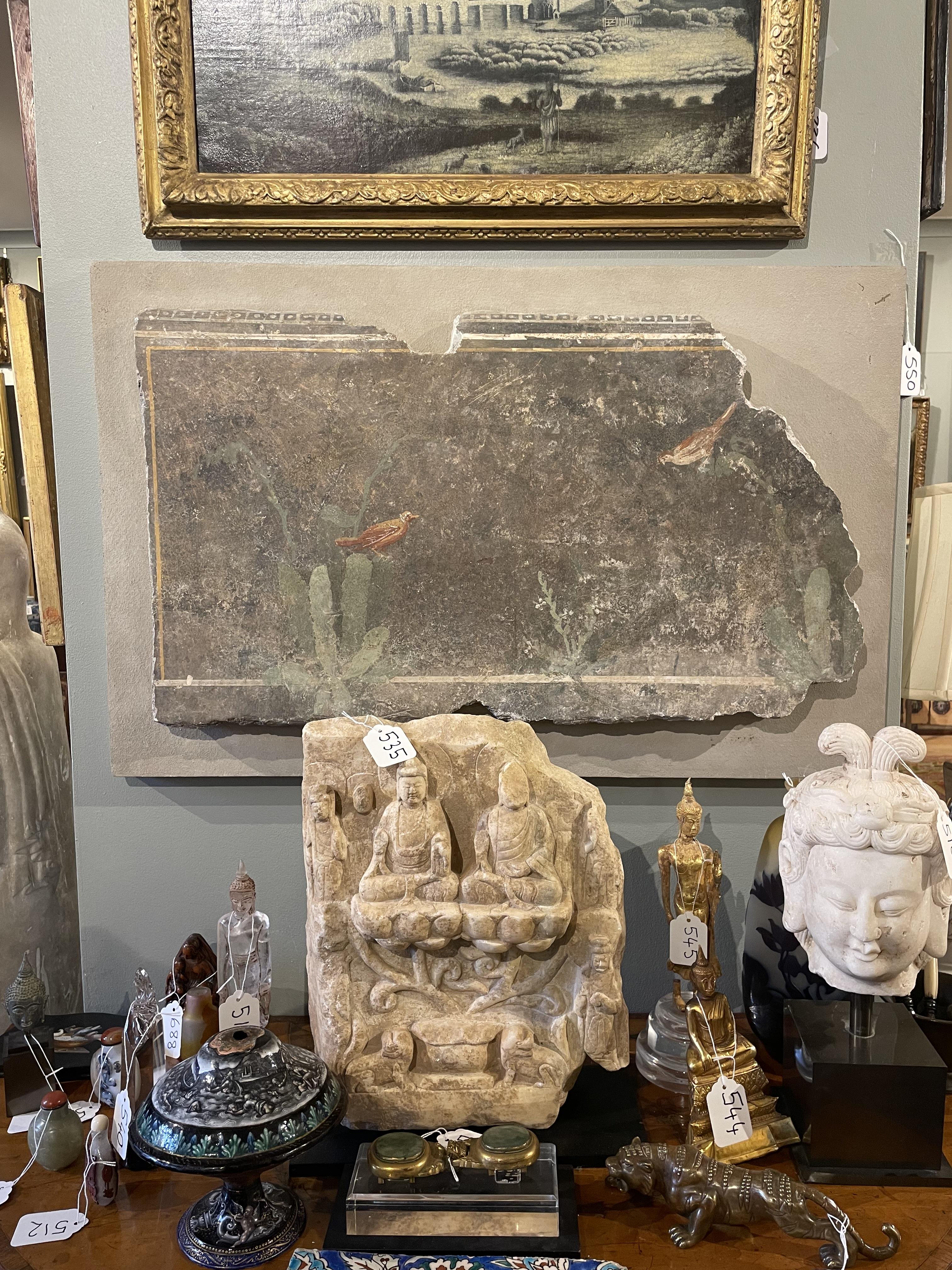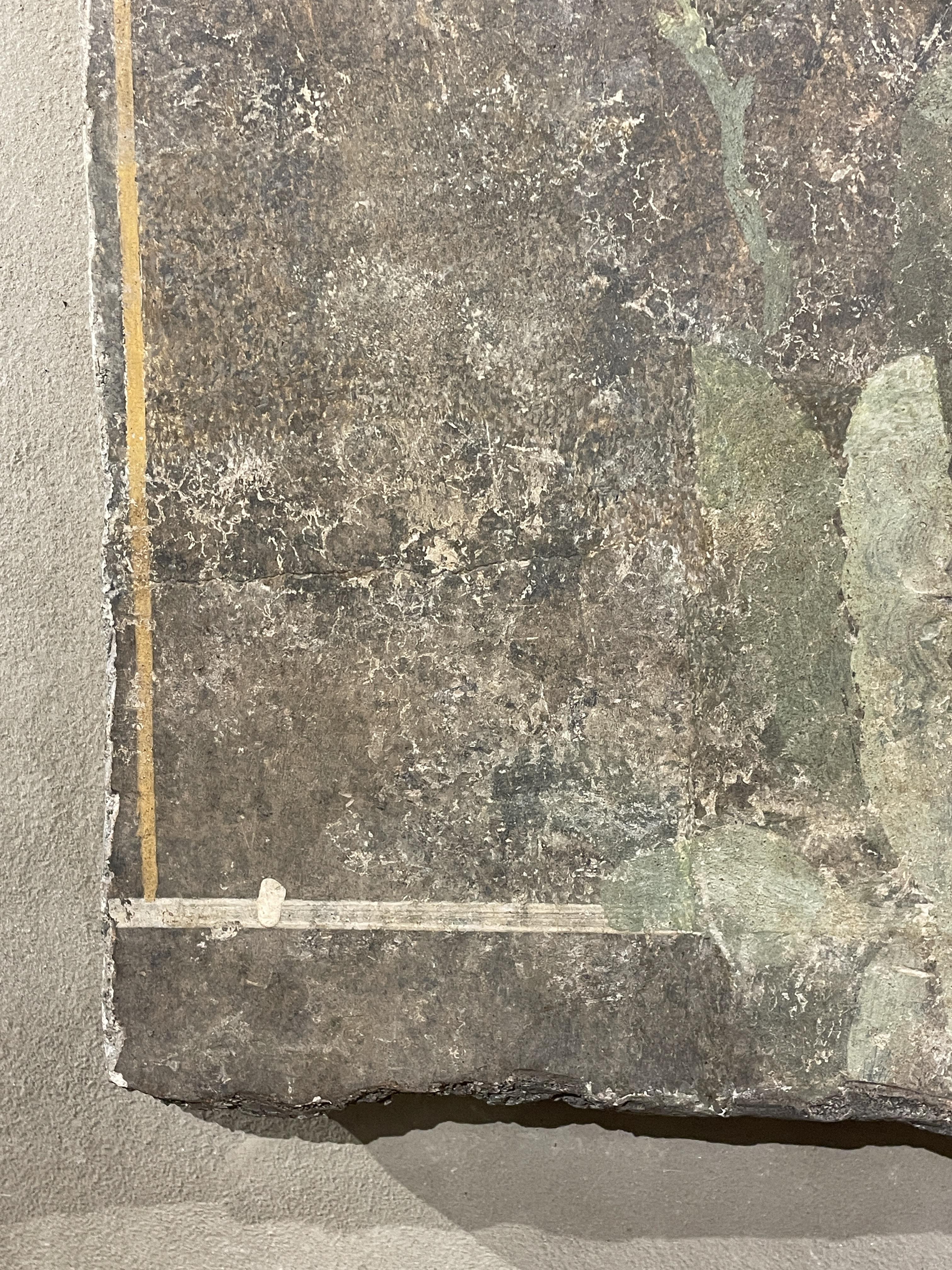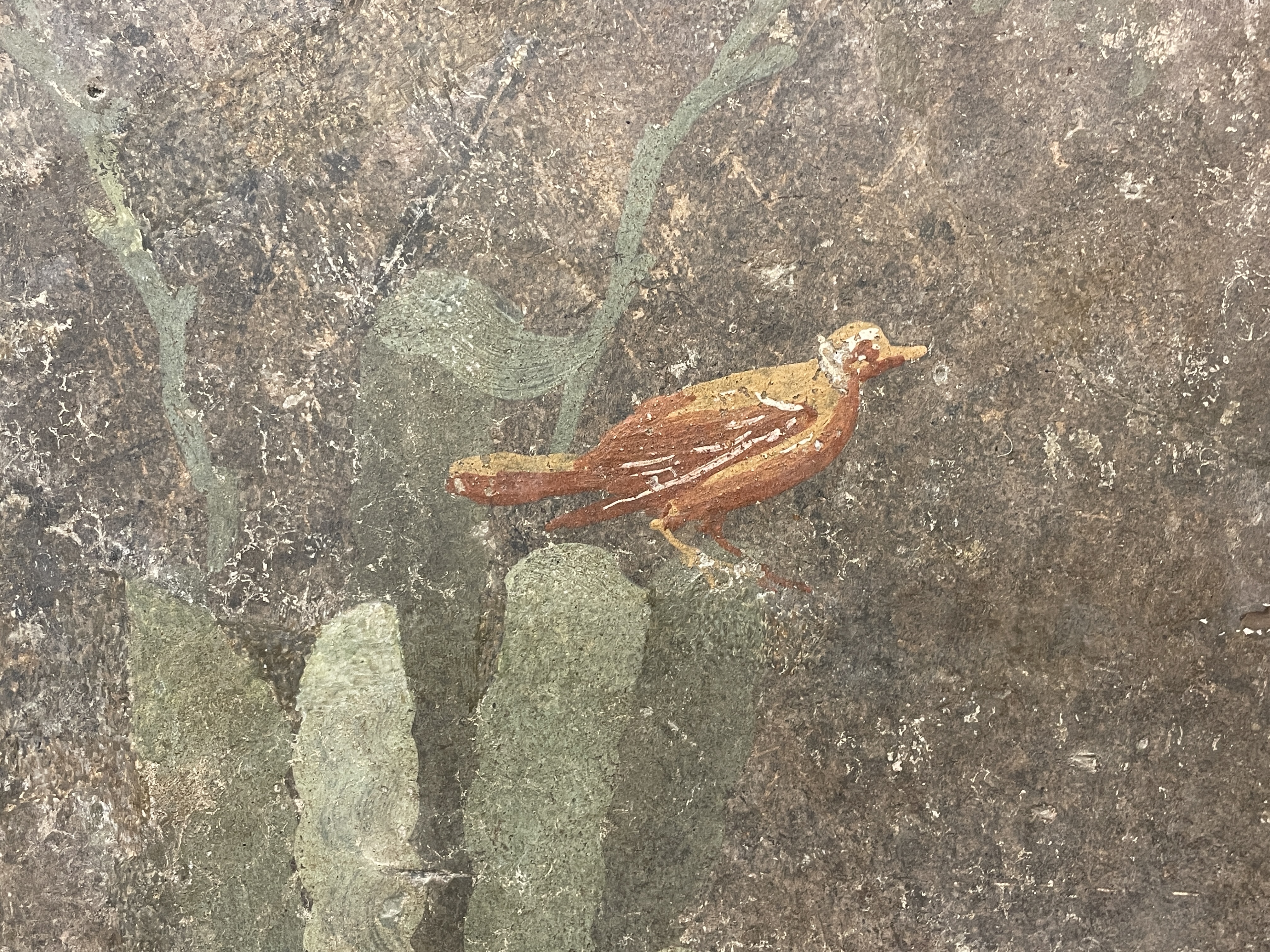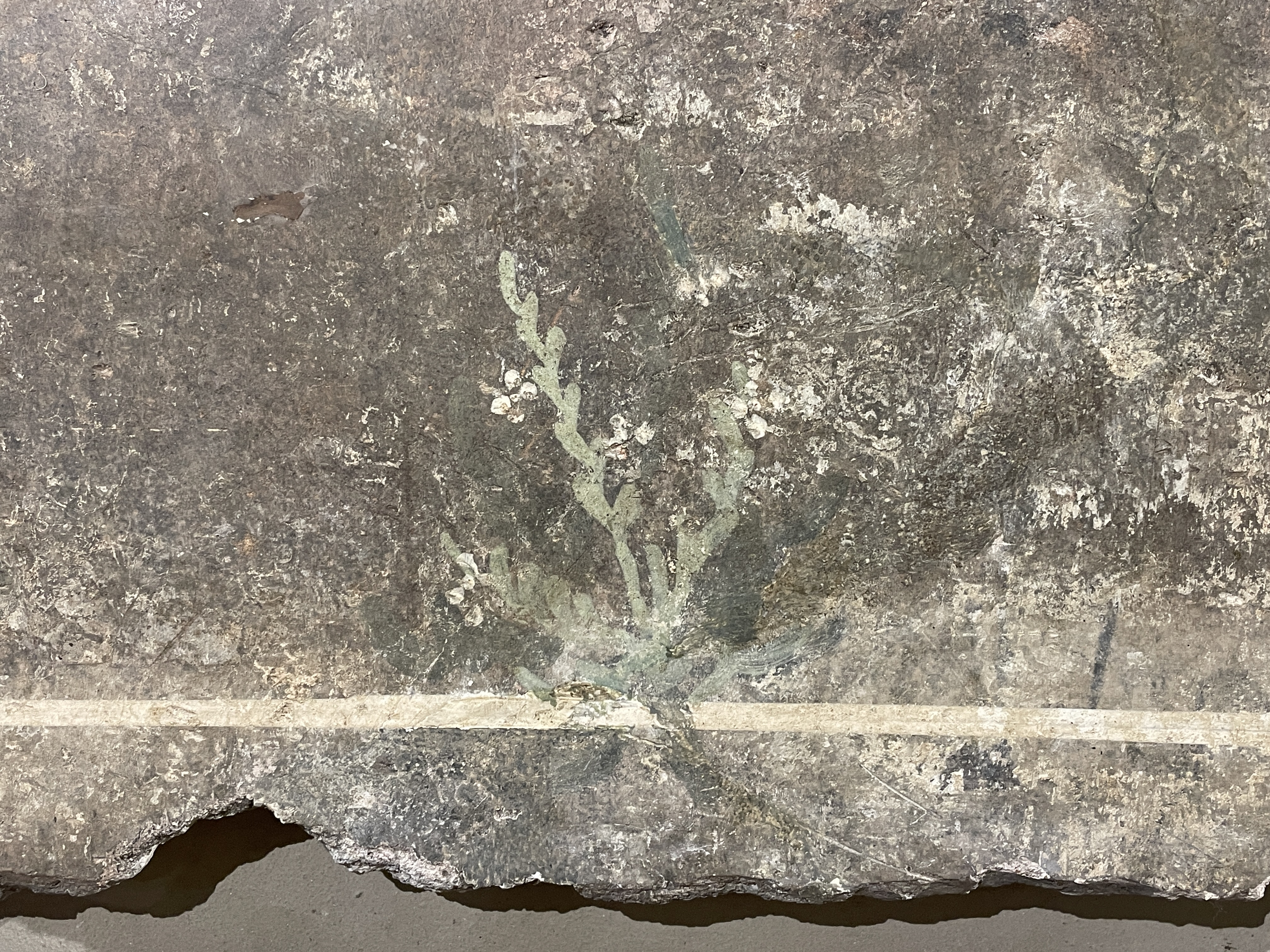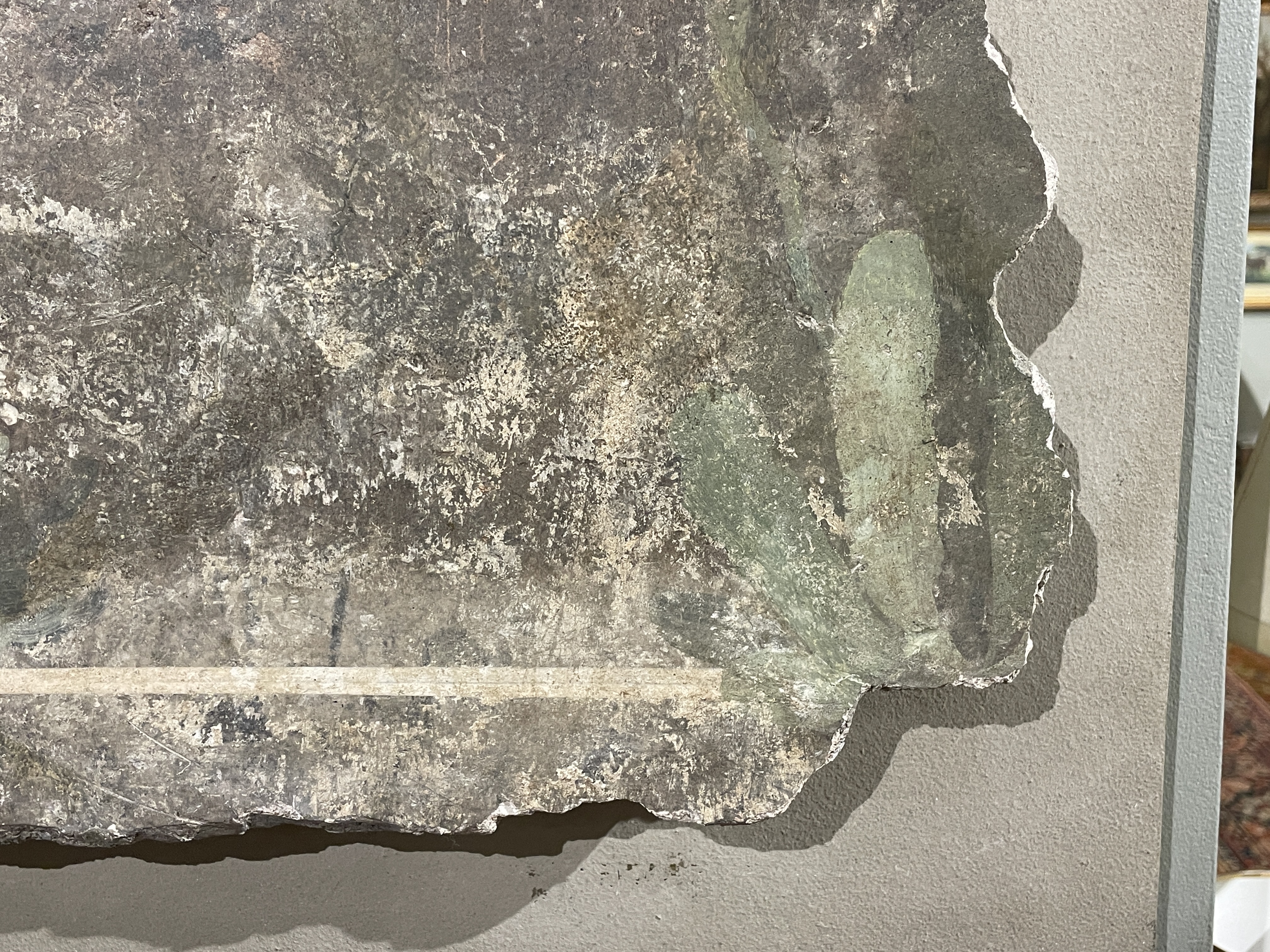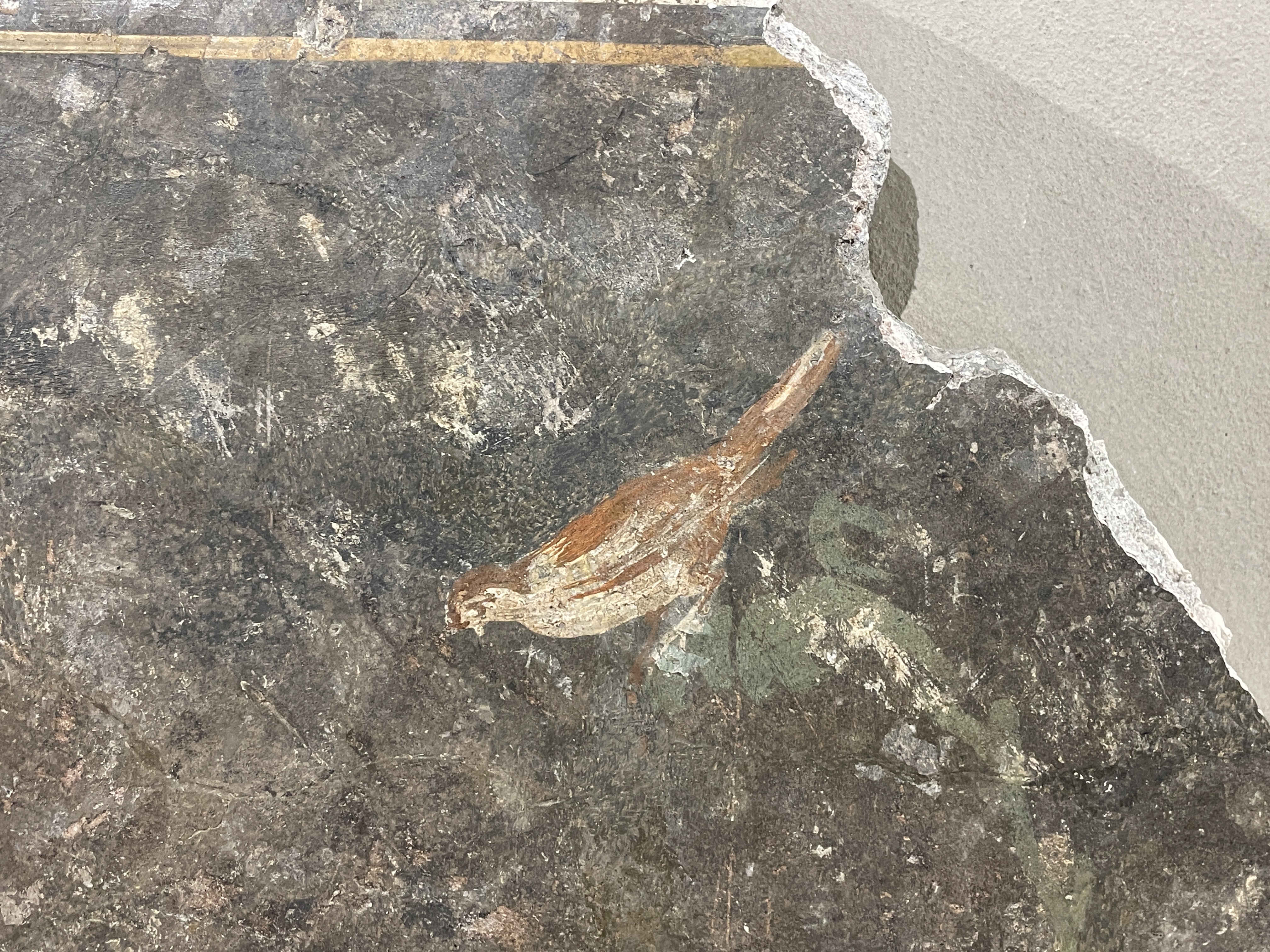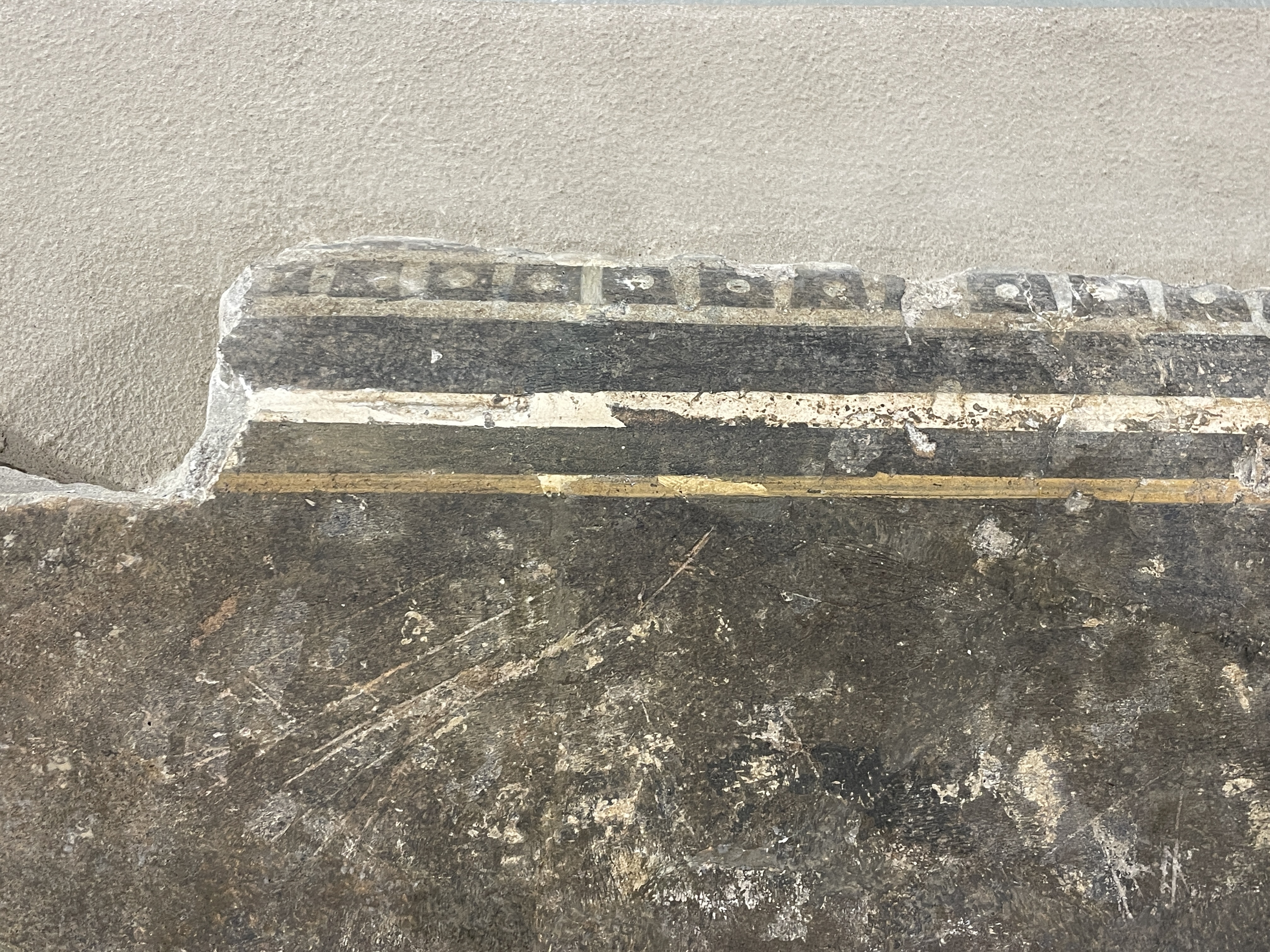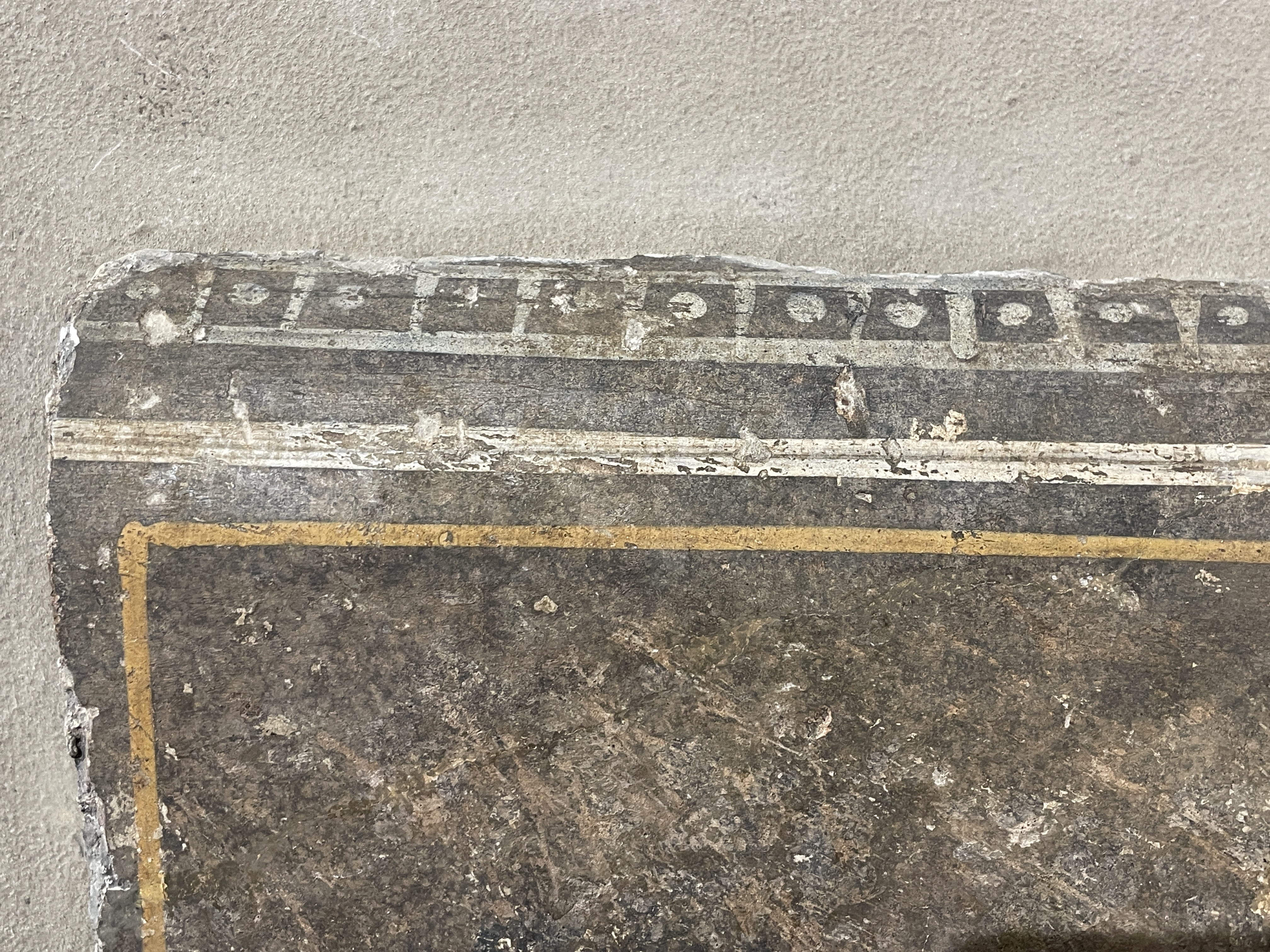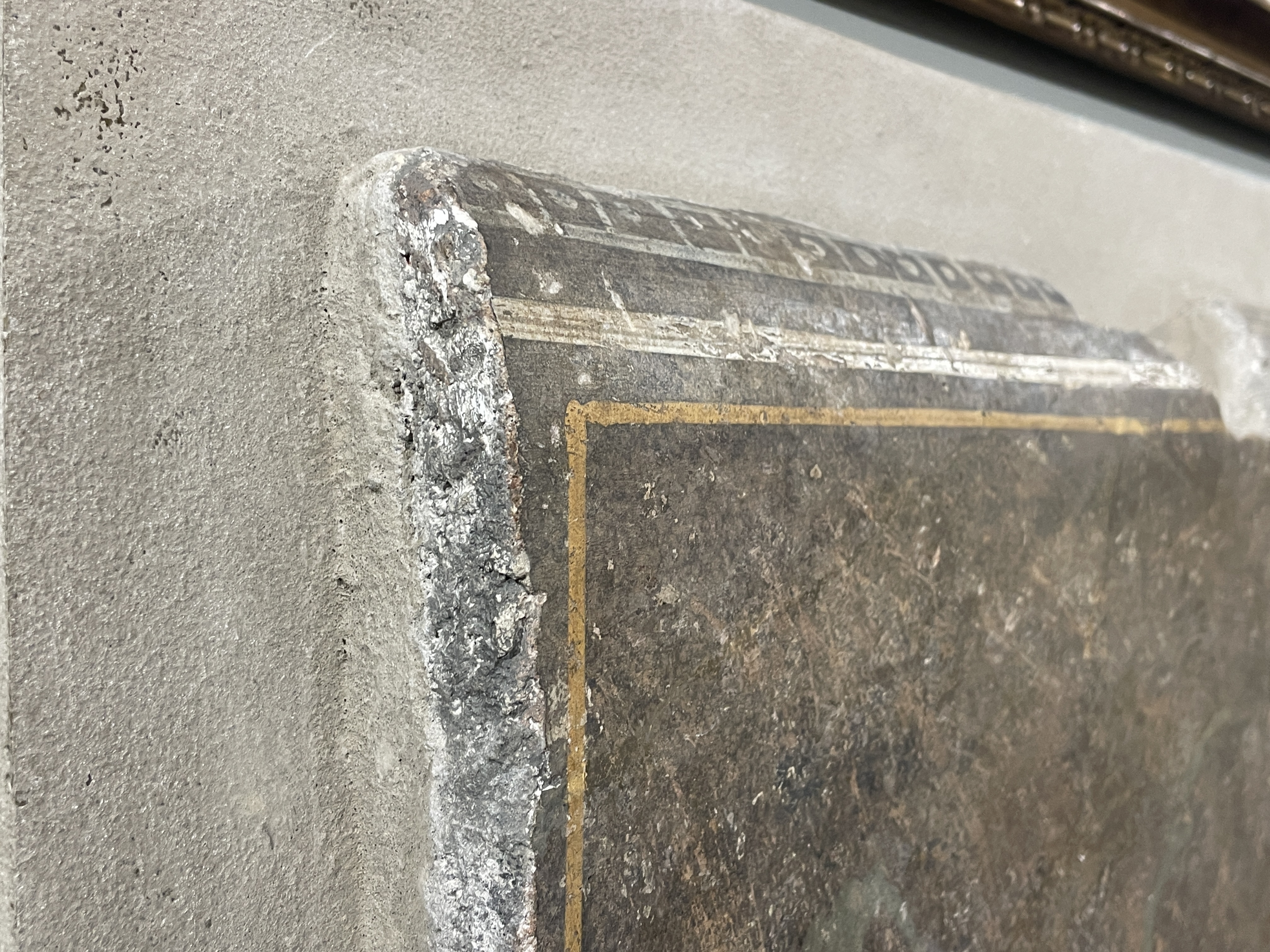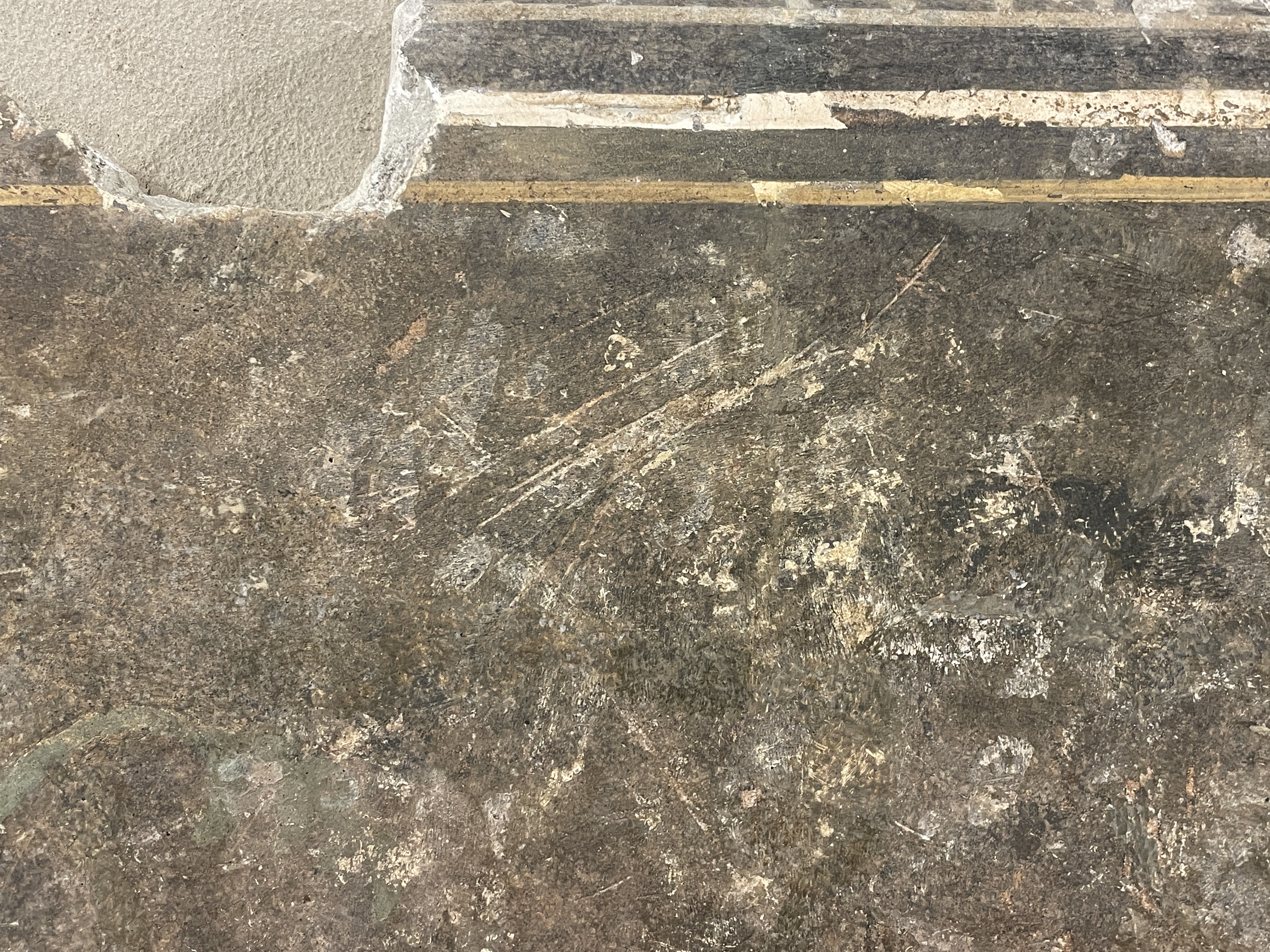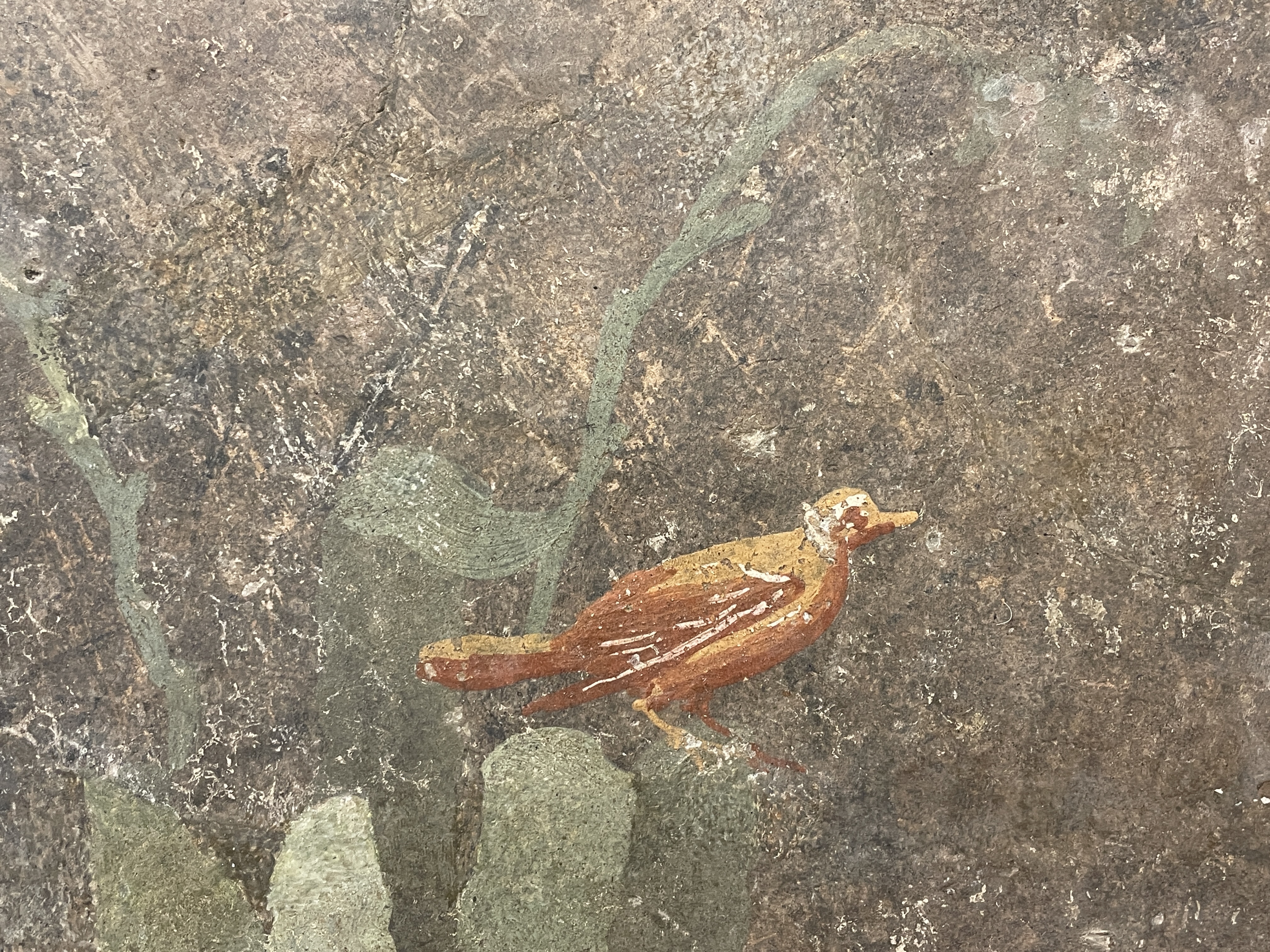550
Roman, 1st century AD, Fragment of a fresco
Roman, 1st century AD Fragment of a fresco depicting plants and two birds Painted plaster Provenance: Private collection, acquired in the 1970-1980s; then by descent, private collection since 1998 (Notarised in Switzerland before the 2005 LTBC). This charming fragment of a Roman fresco is typical of the Augustan period of Roman art, a period when artists became increasingly preoccupied with creative expression and innovation. It fits most likely into the Third Style of roman wall painting, as classified by August Mau, where larger spaces became increasingly closed with painted architectural elements and sections. Wall paintings from this period typically comprise a single monochrome background—such as red, black, or white—with elaborate architectural and vegetal details. The delineation of the architectural element shown here by the white and yellow lines is blurred slightly by the flora growing seemingly across them, and the flowers are painted with a fresh naturalism. The two birds, possibly sparrows, are looking at one another with a bright attentiveness. Although ancient literary references tell us of Roman paintings on wood, ivory, and other materials, works that have survived are in the durable medium of fresco that was used to adorn the interiors of private homes in Roman cities and in the countryside. The majority found have been in the region of Campania, near the Bay of Naples, but it is believed that the practice of frescoing private homes was widespread throughout the Roman Empire, and that roman artists would often travel widely, with copy books containing patterns the patron could choose from. Both Pliny and Vitruvius write of fresco techniques, with Vitruvius even going into different pigments used and their sources. Dimensions: (Base) 27.5 in. (H) x 33.5 in. (W) (Fragment) 16.5 in. (H) x 29 in. (W)
Roman, 1st century AD Fragment of a fresco depicting plants and two birds Painted plaster Provenance: Private collection, acquired in the 1970-1980s; then by descent, private collection since 1998 (Notarised in Switzerland before the 2005 LTBC). This charming fragment of a Roman fresco is typical of the Augustan period of Roman art, a period when artists became increasingly preoccupied with creative expression and innovation. It fits most likely into the Third Style of roman wall painting, as classified by August Mau, where larger spaces became increasingly closed with painted architectural elements and sections. Wall paintings from this period typically comprise a single monochrome background—such as red, black, or white—with elaborate architectural and vegetal details. The delineation of the architectural element shown here by the white and yellow lines is blurred slightly by the flora growing seemingly across them, and the flowers are painted with a fresh naturalism. The two birds, possibly sparrows, are looking at one another with a bright attentiveness. Although ancient literary references tell us of Roman paintings on wood, ivory, and other materials, works that have survived are in the durable medium of fresco that was used to adorn the interiors of private homes in Roman cities and in the countryside. The majority found have been in the region of Campania, near the Bay of Naples, but it is believed that the practice of frescoing private homes was widespread throughout the Roman Empire, and that roman artists would often travel widely, with copy books containing patterns the patron could choose from. Both Pliny and Vitruvius write of fresco techniques, with Vitruvius even going into different pigments used and their sources. Dimensions: (Base) 27.5 in. (H) x 33.5 in. (W) (Fragment) 16.5 in. (H) x 29 in. (W)
The Valentine's Auction: To include Old and Modern Masters, Jewellery and other Estate Contents including The Late Baroness Thatcher
Sale Date(s)
Venue Address
For Sloane Street Auctions delivery information please telephone +44 (0) 20 39158340.
Important Information
.
Terms & Conditions
For our Terms & Conditions, please click here.




























